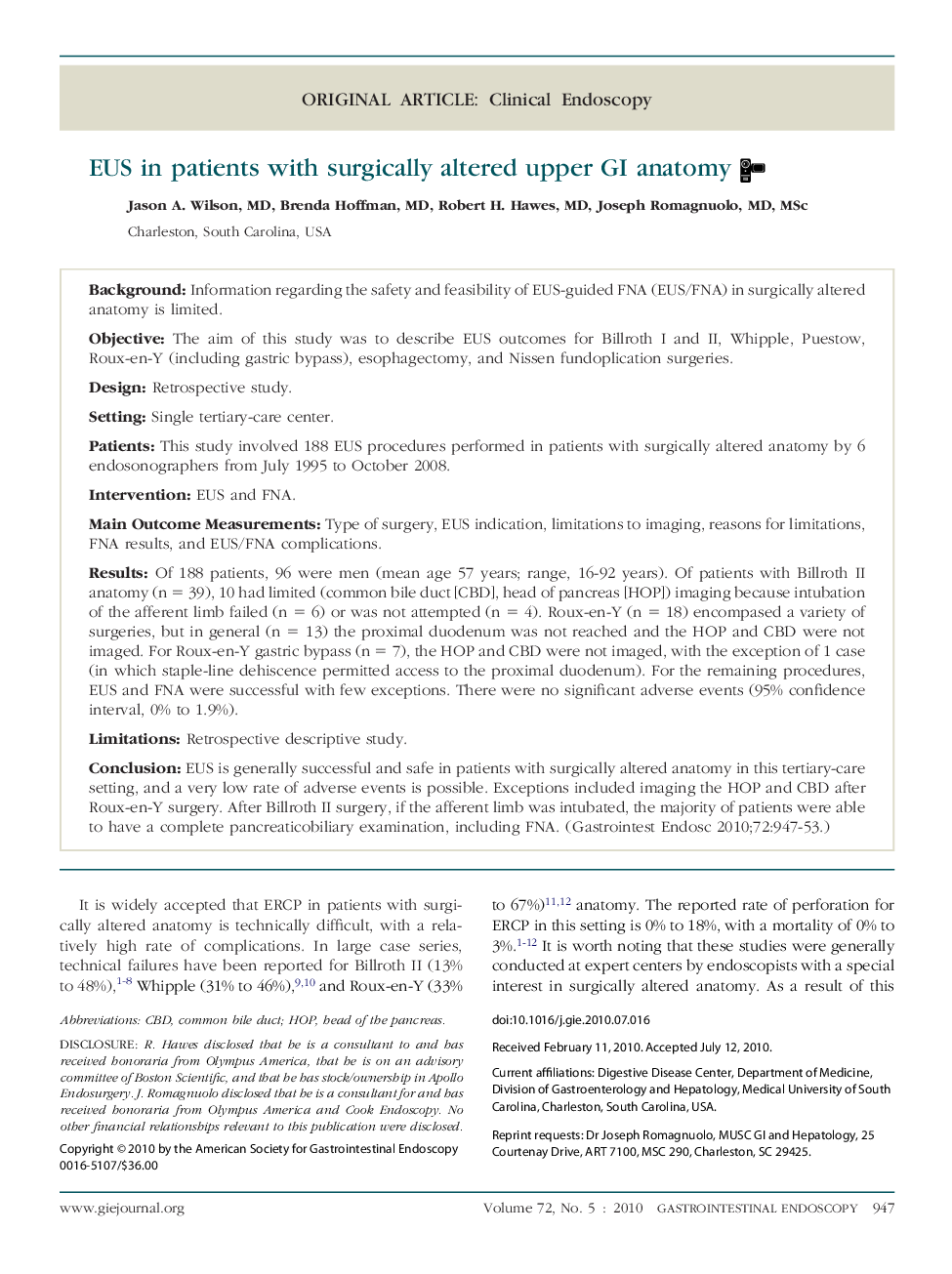| کد مقاله | کد نشریه | سال انتشار | مقاله انگلیسی | نسخه تمام متن |
|---|---|---|---|---|
| 3306381 | 1210368 | 2010 | 7 صفحه PDF | دانلود رایگان |

BackgroundInformation regarding the safety and feasibility of EUS-guided FNA (EUS/FNA) in surgically altered anatomy is limited.ObjectiveThe aim of this study was to describe EUS outcomes for Billroth I and II, Whipple, Puestow, Roux-en-Y (including gastric bypass), esophagectomy, and Nissen fundoplication surgeries.DesignRetrospective study.SettingSingle tertiary-care center.PatientsThis study involved 188 EUS procedures performed in patients with surgically altered anatomy by 6 endosonographers from July 1995 to October 2008.InterventionEUS and FNA.Main Outcome MeasurementsType of surgery, EUS indication, limitations to imaging, reasons for limitations, FNA results, and EUS/FNA complications.ResultsOf 188 patients, 96 were men (mean age 57 years; range, 16-92 years). Of patients with Billroth II anatomy (n = 39), 10 had limited (common bile duct [CBD], head of pancreas [HOP]) imaging because intubation of the afferent limb failed (n = 6) or was not attempted (n = 4). Roux-en-Y (n = 18) encompased a variety of surgeries, but in general (n = 13) the proximal duodenum was not reached and the HOP and CBD were not imaged. For Roux-en-Y gastric bypass (n = 7), the HOP and CBD were not imaged, with the exception of 1 case (in which staple-line dehiscence permitted access to the proximal duodenum). For the remaining procedures, EUS and FNA were successful with few exceptions. There were no significant adverse events (95% confidence interval, 0% to 1.9%).LimitationsRetrospective descriptive study.ConclusionEUS is generally successful and safe in patients with surgically altered anatomy in this tertiary-care setting, and a very low rate of adverse events is possible. Exceptions included imaging the HOP and CBD after Roux-en-Y surgery. After Billroth II surgery, if the afferent limb was intubated, the majority of patients were able to have a complete pancreaticobiliary examination, including FNA.
Journal: Gastrointestinal Endoscopy - Volume 72, Issue 5, November 2010, Pages 947–953